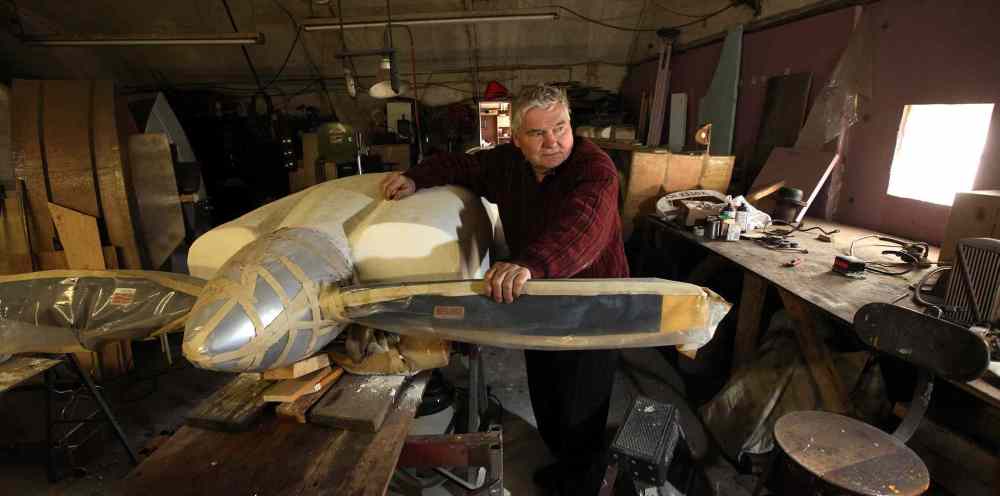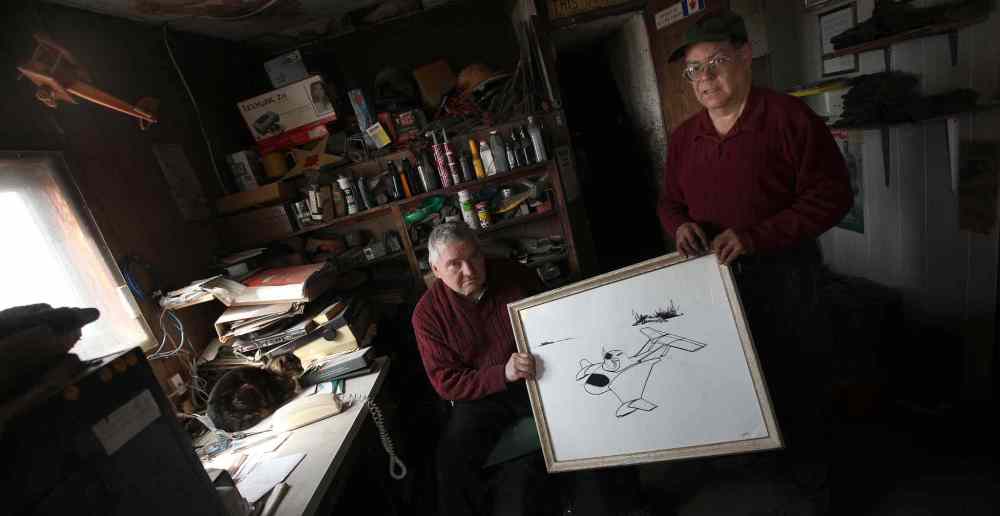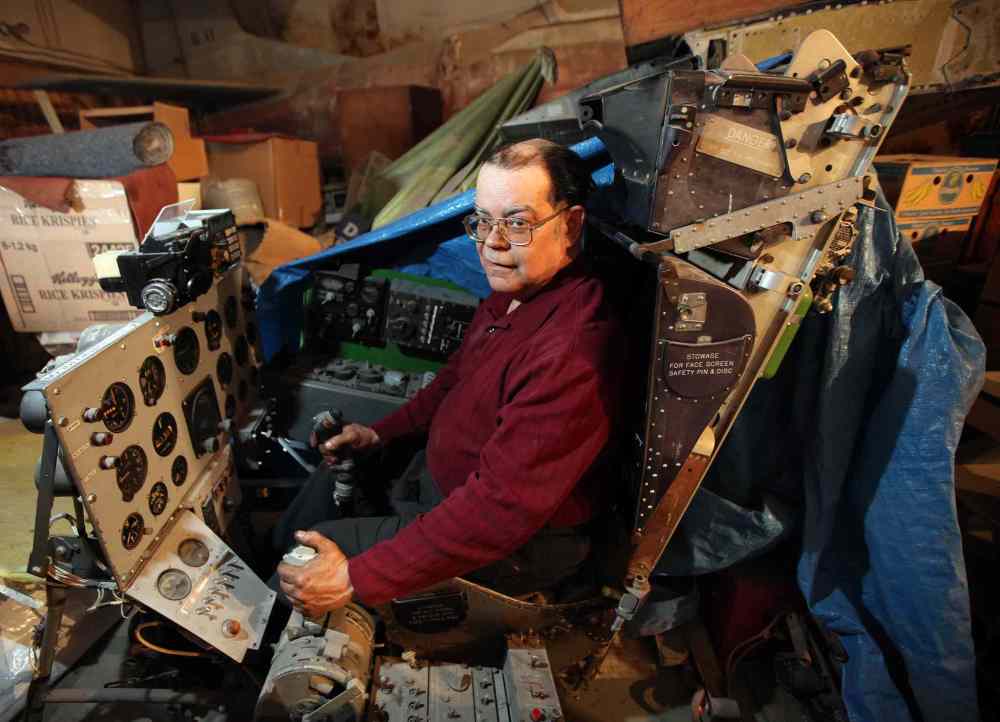Tweaking the WIGs: Carman team among developers of advanced aircraft
Advertisement
Read this article for free:
or
Already have an account? Log in here »
To continue reading, please subscribe:
Monthly Digital Subscription
$1 per week for 24 weeks*
- Enjoy unlimited reading on winnipegfreepress.com
- Read the E-Edition, our digital replica newspaper
- Access News Break, our award-winning app
- Play interactive puzzles
*Billed as $4.00 plus GST every four weeks. After 24 weeks, price increases to the regular rate of $19.00 plus GST every four weeks. Offer available to new and qualified returning subscribers only. Cancel any time.
Monthly Digital Subscription
$4.75/week*
- Enjoy unlimited reading on winnipegfreepress.com
- Read the E-Edition, our digital replica newspaper
- Access News Break, our award-winning app
- Play interactive puzzles
*Billed as $19 plus GST every four weeks. Cancel any time.
To continue reading, please subscribe:
Add Free Press access to your Brandon Sun subscription for only an additional
$1 for the first 4 weeks*
*Your next subscription payment will increase by $1.00 and you will be charged $16.99 plus GST for four weeks. After four weeks, your payment will increase to $23.99 plus GST every four weeks.
Read unlimited articles for free today:
or
Already have an account? Log in here »
Hey there, time traveller!
This article was published 08/05/2015 (3807 days ago), so information in it may no longer be current.
CARMAN — In the world’s most humble airstrip, aviation researchers might one day make you say “wigging.”
Wigging is the verb form for travel by a wing in ground effect craft, or WIG, an emerging technology that combines features of marine and air travel.
WIGs skim on a cushion of air and have potential to reduce the cost of shipping goods to northern communities by 75 per cent.

The local developers are Bob Diemert and Chris Ball at the Friendship Field Airport on the edge of Carman.
It’s a ramshackle, homemade airstrip unlike any you’ve seen. It been around since 1959 and today consists of about a dozen old buildings, including the former Flo & Joan’s Beauty Parlour (converted to a storage shed) and the local Pop Shop from Carman. There’s also Hangar No. 8, formerly a building in Headingley Diemert and Ball disassembled and rebuilt here.
What lends Friendship Field credibility are the guys inside.
Diemert, 75, was once hailed as an “aviation visionary.” He shot to fame in 1969 as a “warbird” restorer. A farm kid from near Carman with only a Grade 12 education, he restored a British fighter aircraft, the Hawker Hurricane; something no one had done before. He flew it across the ocean and piloted it in the movie, The Battle of Britain, starring Sir Lawrence Olivier and Christopher Plummer.
Diemert went on to explore the jungles in the South Pacific, in such places as the Solomon Islands, collecting parts from downed Japanese warplanes. He restored the first Pearl Harbor Japanese Zero fighter aircraft for the National Museum of Marine Corps in Virginia and the Confederate Air Force in Texas, further cementing his international reputation.
In 1988, the National Film Board made an hour-long documentary on the efforts of Diemert and Ball to build a military aircraft for the Canadian Forces, called the Defender, costing $900 million less than the CF-18s Ottawa was buying. The plane was armoured and Diemert boasted a pilot would survive a crash if shot down. The challenge was getting the enormously heavy aircraft off the ground.
‘It’s a phenomenon we haven’t been using, but one we should have been using long ago’ — Bob Diemert
Transport Canada’s refusal to license the aircraft was devastating for Diemert and Ball, the latter described as an “electronics wizard” in the NFB film.
In recent years, the independent researchers have shifted their focus to designing an advanced WIG. Because the craft hovers on a cushion of air, it requires 25 per cent less fuel than a plane, Diemert said.
WIGs are also an alternative to winter roads and northern runways, both of which are suffering the effects of global warming. “Runways are on permafrost, and the permafrost is coming out. The runways (in northern centres) are caving in,” Diemert said.
A WIG skims six to eight metres off the ground and can fly when needed over bridges and other obstacles. They are licensed as watercraft so long as they stay within 152 metres of ground level. The WIG follows water but can also skim over snowed-over lakes, rivers and treeless land.
The initial technology came out of Germany, and Russia employs WIGs for some transport to Siberian villages, but uses outdated technology, Diemert said. Diemert believes he’s the only person developing a WIG in North America.

Aircraft have high pressure on the bottom of the wing and low pressure on top, and the high pressure trying to push through the wing to get to the low pressure gives the aircraft lift. At the wing tip, the disparity in air pressure causes air to spin, like small tornadoes.
“That air may be going 300 miles an hour,” Diemert said.
The WIG, with wings angled towards the ground, traps those vortices under its wings. When that air pressure is trapped, and the weight of the plane sits on it, the air gets squeezed and starts to spin even faster, providing lift. The air escapes out the back of the wing pushing the WIG forward, so very little fuel is required.
“It’s a phenomenon we haven’t been using, but one we should have been using long ago,” Diemert said. WIGs can also carry heavier loads than aircraft the same size.
“The beauty is you don’t need any airfields to land,” Diemert said. Instead, they land on lakes or rivers. It has nearly a vertical takeoff.

Diemert and Ball were guests of the Manitoba Aviation Council last year for a screening of the NFB film, The Defender, followed by a question-and-answer session.
bill.redekop@freepress.mb.ca
History
Updated on Friday, May 8, 2015 7:20 AM CDT: Replaces photos

